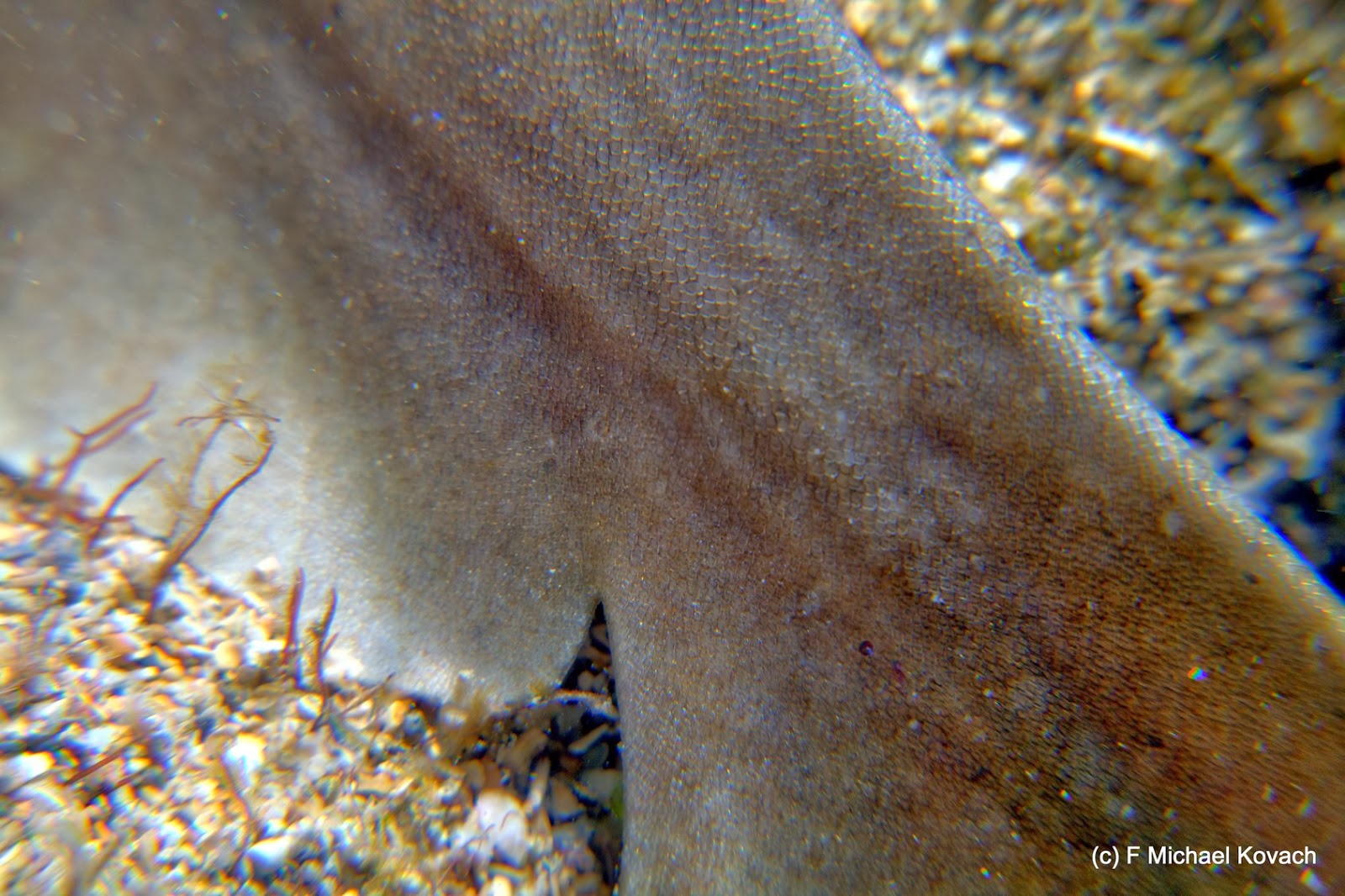Fortunately I carry a spare card, as well as other gear, and fortunately Leo wanted to make a second dive, so I got another chance. This time I made sure there was a card in the camera, albeit only a 2 GB card. Still, it was so much better than nothing.
I got several shots of this Yellow Sand Ray, but I really liked this one. We had descended over the algae and swam out underwater and this little ray was cruising the algae.
Surprisingly, everything worked and we swam right to the Jacks. I got this shot of a Blue Tang near a small pile of 4 jacks several yards to the West of the main grouping.
Porcupinefish are quite timid and will usually swim the other way if a diver approaches, but I held my breath to avoid the sound of my bubbles and drifted up to this one. I got pretty close, but would have liked to have been in front of him.
There are lots of Trumpetfish on the Jacks and the little guy to the right is what they usually look like. There is one that frequents the Jacks, however, that has a blue face. I also got a picture of that fish on this dive. It's not the best picture of the faced, but you can nonetheless tell it is blue.
 On the first dive I had spotted a Peacock Flounder. This fellow had a Cymothoid Isopod attached. The Cymothoids are not parasites, who eat their hosts, but rather attach themselves near the host's mouth and eat food floating in the water without damaging the host. They begin life as free-swimming males about 1/8th inch long. Once they attach to a host, however, they lose the ability to swim and will remain with the host for life.
On the first dive I had spotted a Peacock Flounder. This fellow had a Cymothoid Isopod attached. The Cymothoids are not parasites, who eat their hosts, but rather attach themselves near the host's mouth and eat food floating in the water without damaging the host. They begin life as free-swimming males about 1/8th inch long. Once they attach to a host, however, they lose the ability to swim and will remain with the host for life.
The small males who attach to a host with a female already in place will mate with that female. When the female dies, the male will change into a female and wait for male to join her.
I often see Cymothoid Isopods on Doctorfish or Ocean Surgeonfish. This was an exception.
I got a pretty good shot of a Spotted Goatfish with his barbels extended, searching for food.
This is a little Three-spot Damselfish. There are many of these along the Jacks.





























